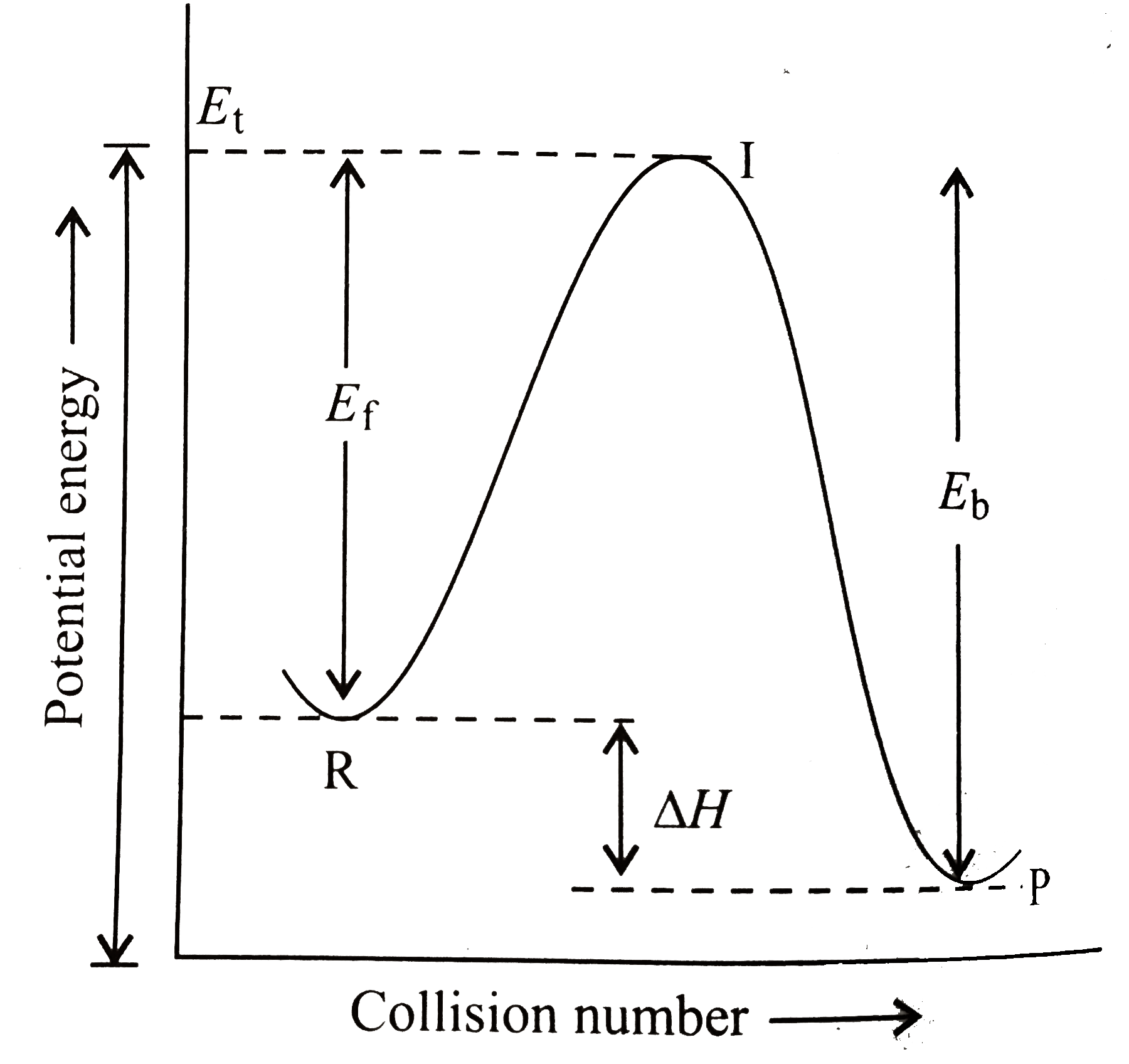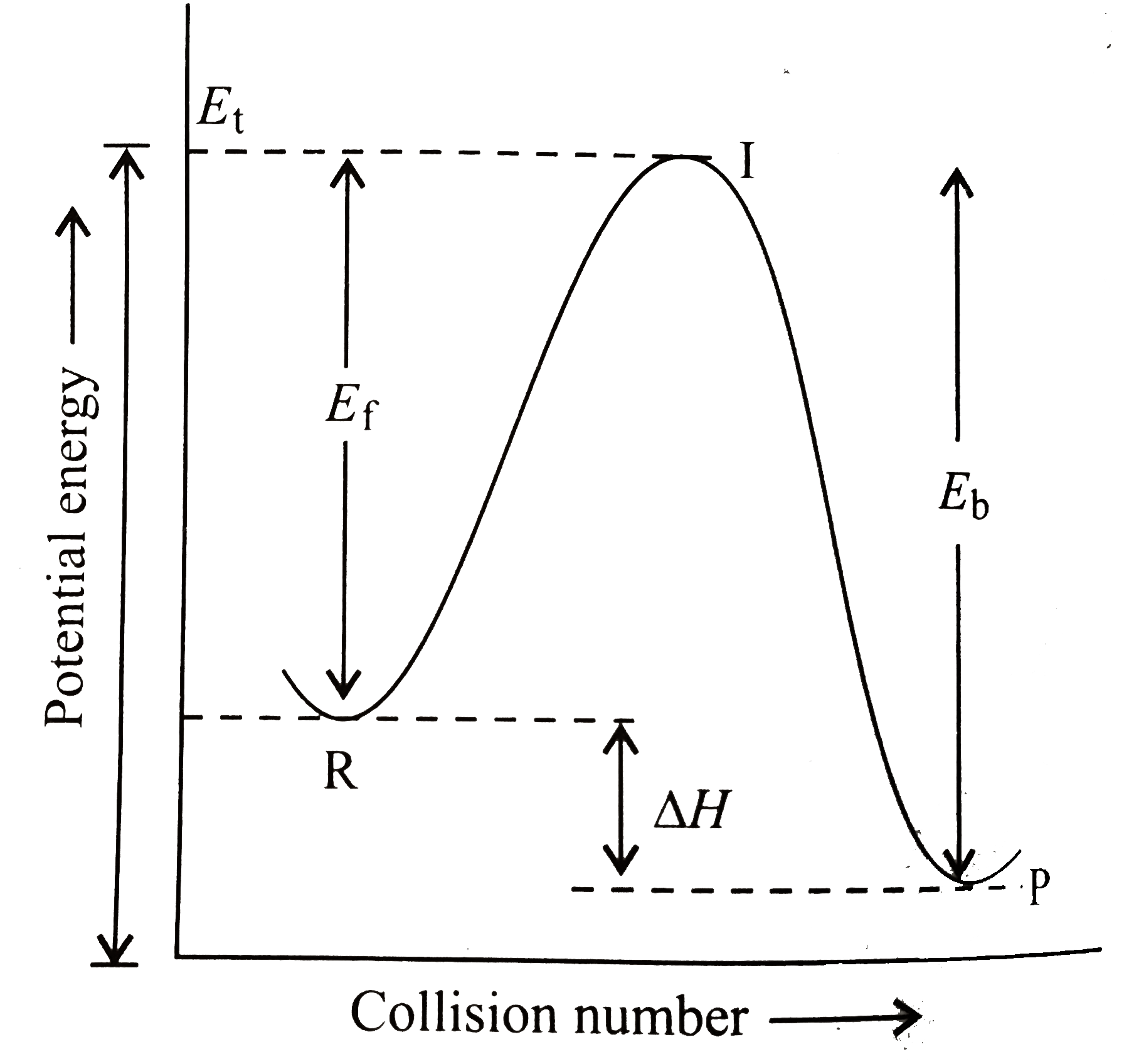If Ef and Er are the activation energies of forward and backward reactions and the reaction is known to be exothermic, then
Ef>Er
Ef<Er
Ef=Er
No relation can be given between Ef and Er
The correct Answer is:B
To solve the problem, we need to analyze the relationship between the activation energies of the forward and backward reactions in an exothermic reaction. Here’s a step-by-step breakdown:
Step 1: Understand the Nature of Exothermic Reactions
In an exothermic reaction, the reactants have higher energy than the products. This means that energy is released when the reaction occurs.
Step 2: Draw the Energy Profile Diagram
To visualize the energy changes during the reaction, we can draw an energy profile diagram. The x-axis represents the reaction progress, while the y-axis represents the energy.
1. Start with the reactants (A) at a higher energy level.
2. As the reaction proceeds to form products (B), the energy decreases, indicating that energy is released.
3. The peak of the curve represents the transition state, which is the highest energy point during the reaction.
Step 3: Identify Activation Energies
- Activation Energy of Forward Reaction (E_f): This is the energy required to convert reactants (A) to products (B). It is the energy difference between the reactants and the transition state.
- Activation Energy of Backward Reaction (E_r): This is the energy required to convert products (B) back to reactants (A). It is the energy difference between the products and the transition state.
Step 4: Compare E_f and E_r
From the energy profile diagram:
- The activation energy for the forward reaction (E_f) is the energy difference from A to the peak.
- The activation energy for the backward reaction (E_r) is the energy difference from B to the peak.
Since the reactants are at a higher energy level than the products in an exothermic reaction, the energy difference (E_r) from the products (B) to the peak (transition state) will be greater than the energy difference (E_f) from the reactants (A) to the peak.
Conclusion
Thus, we can conclude that for an exothermic reaction:
Er>Ef
This means that the activation energy for the reverse reaction (E_r) is greater than that for the forward reaction (E_f).
Final Answer
The correct option is: E_f < E_r
In an exothermic reaction, the reactants have higher energy than the products. This means that energy is released when the reaction occurs.
To visualize the energy changes during the reaction, we can draw an energy profile diagram. The x-axis represents the reaction progress, while the y-axis represents the energy.
2. As the reaction proceeds to form products (B), the energy decreases, indicating that energy is released.
3. The peak of the curve represents the transition state, which is the highest energy point during the reaction.
- Activation Energy of Forward Reaction (E_f): This is the energy required to convert reactants (A) to products (B). It is the energy difference between the reactants and the transition state.
- Activation Energy of Backward Reaction (E_r): This is the energy required to convert products (B) back to reactants (A). It is the energy difference between the products and the transition state.
From the energy profile diagram:
- The activation energy for the forward reaction (E_f) is the energy difference from A to the peak.
- The activation energy for the backward reaction (E_r) is the energy difference from B to the peak.
Thus, we can conclude that for an exothermic reaction:
Er>Ef
This means that the activation energy for the reverse reaction (E_r) is greater than that for the forward reaction (E_f).
The correct option is: E_f < E_r
Topper's Solved these Questions
- CHEMICAL EQUILIBRIUMBOOK - CENGAGE CHEMISTRY ENGLISHCHAPTER - CHEMICAL EQUILIBRIUMEXERCISE - Exercises (Subjective)
46 Videos
- CHEMICAL EQUILIBRIUMBOOK - CENGAGE CHEMISTRY ENGLISHCHAPTER - CHEMICAL EQUILIBRIUMEXERCISE - Exercises (Linked Comprehensive)
54 Videos
- CHEMICAL EQUILIBRIUMBOOK - CENGAGE CHEMISTRY ENGLISHCHAPTER - CHEMICAL EQUILIBRIUMEXERCISE - Concept Applicationexercise 7.1
53 Videos
- CHEMICAL BONDING AND MOLECULAR STRUCTUREBOOK - CENGAGE CHEMISTRY ENGLISHCHAPTER - CHEMICAL BONDING AND MOLECULAR STRUCTUREEXERCISE - Archives Subjective
15 Videos
- CLASSIFICATION AND NOMENCLATURE OF ORGANIC COMPOUNDSBOOK - CENGAGE CHEMISTRY ENGLISHCHAPTER - CLASSIFICATION AND NOMENCLATURE OF ORGANIC COMPOUNDSEXERCISE - Analytical and Descriptive Type
3 Videos
Similar Questions
Knowledge Check

(E = activation energy)
Relation between activation energies of above reactions is :AE2>E1>E3BE3>E1>E2CE3>E2>E1DE1>E2>E3
A colliison between reactant molecules must occur with a certain minimum energy before it is effective in yielding Product molecules. This minimum energy is called activation energy Ea Large the value of activation energy, smaller the value of rate constant k. Larger is the value of activation energy, greater is the effect of temperature rise on rate constant k.

Ef= Activation energy of forward reaction
Eb= Activation energy of backward reaction
ΔH=Ef−Eb
Ef= threshold energy
The activation eneries for forward and backward reactions in a chemical reaction are 30.5 and 45.4kJmol−1 respectively. The reaction is
View SolutionEnergy of activation of forward and backward reaction are equal in case (numerical calues) where
View SolutionIf the activation energies of the forward and backward reactions of a reversible reaction are Ea(f) and Ea(b), respectively. The ΔE of the reaction is ………..
View SolutionA colliison between reactant molecules must occur with a certain minimum energy before it is effective in yielding Product molecules. This minimum energy is called activation energy Ea Large the value of activation energy, smaller the value of rate constant k. Larger is the value of activation energy, greater is the effect of temperature rise on rate constant k.

Ef= Activation energy of forward reaction
Eb= Activation energy of backward reaction
ΔH=Ef−Eb
Ef= threshold energy
In a hypothetical reaction A→B, the activation energies for the forward and backward reactions are 15 and 9kJmol−1, respectively. The potential energy of A is 10kJmol−1. Which of the following is wrong?
View SolutionThe activation energies of the forward and backward reactions in the case of a chemical reaction are 37.5 and 51.3 kJ/mole respectively The reaction is
View SolutionThe activation energies of the forward and backward reactions in the case of a chemical reaction are 30.5 and 45.4kJ/mol respectively. The reaction is:
View SolutionA reaction having equal energies of activation for forward and reverse reactions has
View Solution
